On This Page: [hide]
WordPress errors, while common, can be a major headache for website owners, leading to downtime and a poor user experience.
This article is an investigation into the root causes of WordPress issues, shedding light on how server limitations, plugin conflicts, and outdated themes can disrupt your site’s smooth operation.
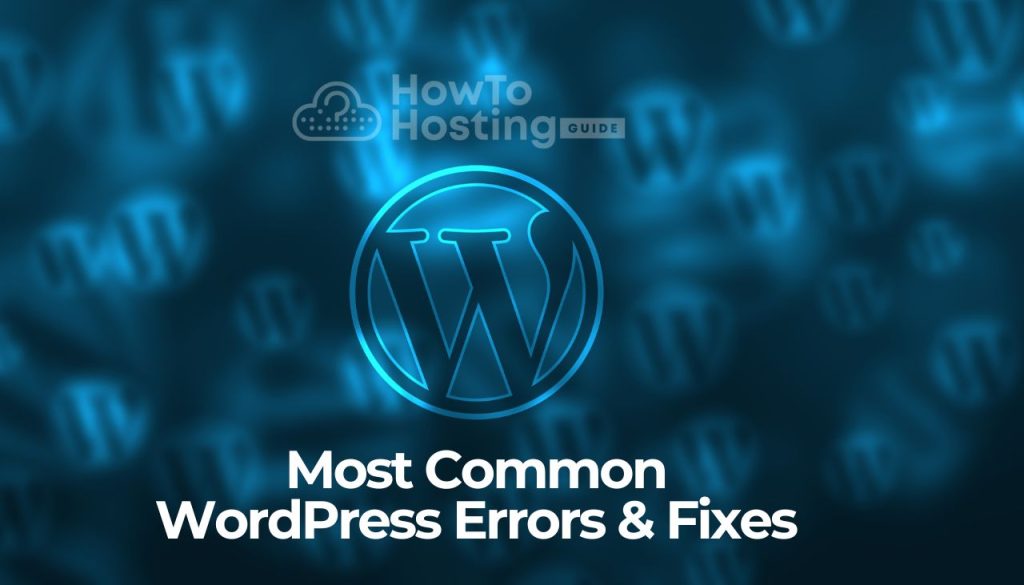
Why Do WordPress Errors Happen? Common Reasons
Several factors contribute to the occurrence of WordPress errors. These can range from incorrect file permissions, which prevent WordPress from reading or writing necessary files, to exceeded memory limits set by your hosting server, which can stop scripts from executing properly. In many cases, errors arise after updating WordPress, themes, or plugins, when the new versions are not fully compatible with your site’s existing setup.
Connectivity issues also play a role, such as when your website cannot communicate with external databases. At times, simply reaching your web host’s limitations on resource usage can trigger errors. Understanding these common triggers helps in diagnosing problems quickly and applying the right solutions.
Server and PHP Limitations
One critical aspect of WordPress management is acknowledging the limitations imposed by your server and PHP configurations. PHP limits, such as memory size or execution time, directly affect WordPress performance. If your site requires more resources than what’s allotted, you’re likely to encounter errors like the white screen of death or frequent 500 internal server errors.
To mitigate such issues, consider upgrading your hosting plan for more resources or optimizing your website to reduce its resource consumption. In addition, ensure your PHP version is up to date, as newer versions typically offer improvements and fixes that can help avoid errors.
Plugin and Theme Conflicts: A Main Culprit
Plugins and themes extend the functionality and design of WordPress sites but can also be a major source of errors. Conflicts occur when two or more plugins or a theme and a plugin try to call the same function, leading to a malfunction. Such issues often manifest after updating or installing new plugins or themes, resulting in site crashes or unexpected behavior.
To resolve plugin and theme conflicts, deactivate all plugins and switch to a default WordPress theme. Then, reactivate them one by one, checking your site for errors after each step. This process helps identify the offending plugin or theme.
Once found, you can choose to replace it with an alternative or reach out to the developer for a fix. Keeping your plugins and themes updated is also crucial, as developers often release updates to address known conflicts and bugs.
Top WordPress Errors You’ll Likely Encounter
WordPress powers a significant portion of the web, showcasing its reliability and flexibility. However, it occasionally encounters errors that can hinder your website’s performance. Getting ahead of these errors and knowing how to address them can significantly reduce downtime and improve user experience. Let’s dive into some of the most common WordPress issues and their solutions.
1. White Screen of Death (WSOD)

Encountering a blank white screen, known as the White Screen of Death (WSOD), can be particularly alarming. This issue is often caused by exhausted memory limits or problematic plugins. To resolve it, increase your site’s PHP memory limit. If that doesn’t work, deactivate all plugins and reactivate them one by one to identify the culprit. Remember, ensuring your themes and plugins are up to date can prevent this issue.
2. Internal Server Error
Known for its vague nature, the Internal Server Error can be a challenge to resolve due to its lack of specificity. Checking your .htaccess file for any incorrect directives by renaming it temporarily can be a first step. If the issue persists, increasing the PHP memory limit or reviewing your plugins and theme could offer a solution. Should these steps fail, contacting your hosting provider is advised, as the problem may be server-related.
3. WordPress Syntax Error

A Syntax Error in WordPress typically signifies a mistake in your site’s code, often resulting from a misplaced character or an incomplete code snippet. Fixing this requires editing the affected code, which can be done via FTP or your host’s file manager tool. It’s crucial to backup your website before making direct changes to the code to prevent further issues.
4.Error Establishing Database Connection
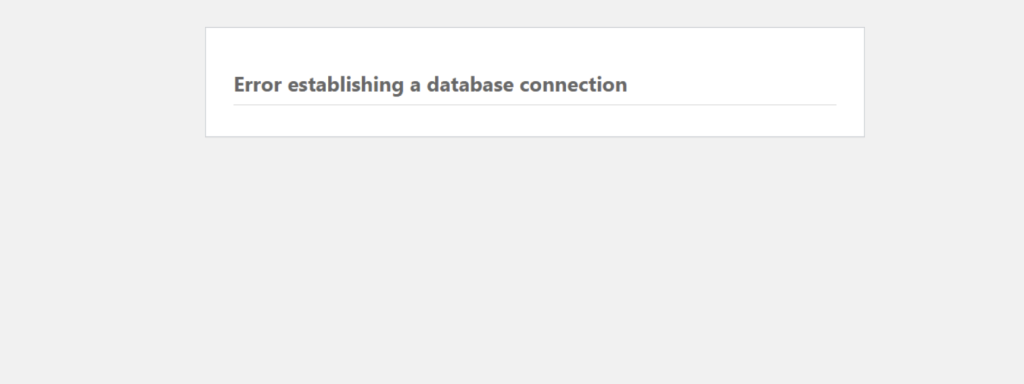
The Error Establishing Database Connection suggests WordPress is unable to connect to the database. It can occur for various reasons, including incorrect database credentials, a corrupted database, or server issues. Ensure your database name, username, password, and server are correct in the wp-config.php file. If the problem persists, consulting with your web host can help, as the issue might be with the server itself.
5. WordPress Posts Returning 404 Error
When your WordPress posts return a 404 Error, it typically means there’s an issue with your site’s permalink settings. To resolve this, go to Settings > Permalinks in your WordPress dashboard and simply click “Save Changes” to flush the permalinks. If this doesn’t rectify the problem, manually resetting your .htaccess file may be necessary.
6. Sidebar Below Content Error
This layout issue often crops up due to coding errors or conflicts within your theme. To fix it, start by checking if the problem persists with default themes. If it does, the issue might lie within your widgets or content that includes incorrect HTML or shortcodes. Ensuring your theme files are error-free and haven’t been modified incorrectly can also help solve this problem.
7. White Text and Missing Buttons in the Visual Editor
White text and missing buttons in the Visual Editor typically indicate a JavaScript conflict or a corrupt TinyMCE files issue. Clearing your browser cache and ensuring nothing is blocking scripts from loading is a good start. If the issue remains, replacing the /wp-includes/js/tinymce/ folder with a fresh copy from a new WordPress download can help.
8. WordPress Memory Exhausted Error
The Memory Exhausted Error signifies your WordPress site is exceeding its allocated memory limit. Increasing the PHP memory limit can be done by editing the wp-config.php file, adding the line `define(‘WP_MEMORY_LIMIT’, ‘256M’);`. Keep in mind, persistent memory issues may require optimizing your site or upgrading your hosting plan.
9. Locked Out of WordPress Admin (wp-admin)
Being locked out of the WordPress admin area can result from plugin or theme conflicts, incorrect password attempts, or changes in the user permissions. To regain access, try clearing your browser cookies and cache, deactivating plugins via FTP, or resetting your password directly through the database using phpMyAdmin.
10. WordPress Login Page Refreshing and Redirecting Issue
If your WordPress login page keeps refreshing or redirecting back to the login screen, it’s often due to incorrect values for the site URL or home URL. Correcting these in the wp-config.php file with the lines `define(‘WP_HOME’,’http://example.com’);` and `define(‘WP_SITEURL’,’http://example.com’);` might solve the problem.
In addition, checking the .htaccess file for any improper redirects and ensuring browser cookies are enabled can also be useful steps.
11. Image Upload Issues
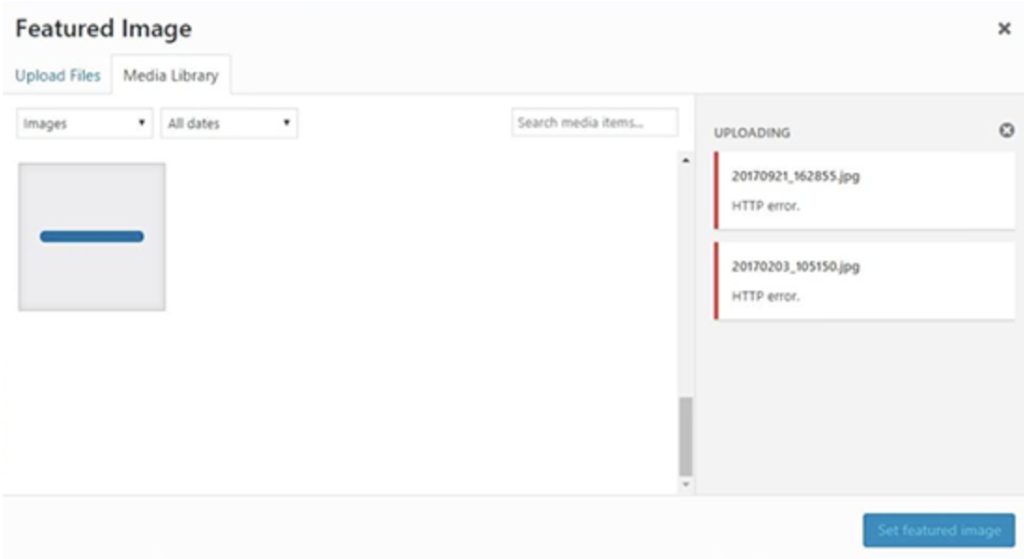
Image upload issues in WordPress, such as the HTTP error, can be caused by a lack of server resources, incorrect file permissions, or conflicts with plugins. Increasing the PHP memory limit or adjusting the file permissions might provide a fix. Utilizing the Media Library to check if the problem is consistent with all files can help narrow down the issue.
12. Common Image Errors in WordPress
Common image errors include broken images, incorrect display in galleries, or issues cropping images. Ensuring your file permissions are correctly set often resolves these problems. Also, checking if the image file exists in the correct location on your server or if there are any spelling mistakes in the file path can eliminate these errors.
13.”Are You Sure You Want to Do This” WordPress Error
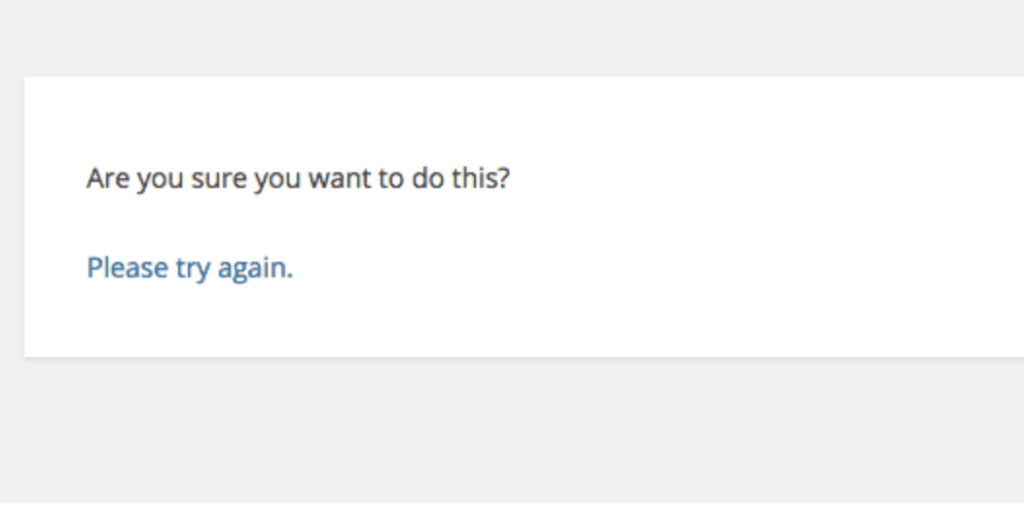
This WordPress error is usually triggered by plugin or theme installation issues, indicating a nonce verification failure. Resolving it can be as simple as trying to upload the plugin or theme again. If repeated attempts fail, ensure your PHP memory limit is adequate, as limitations here can also cause this error.
14. Briefly Unavailable for Scheduled Maintenance Error
WordPress displays this message during updates. If stuck, it typically means the update process was interrupted. Removing the .maintenance file from your website’s root directory via FTP allows your site to exit maintenance mode. This is often a quick fix, but ensuring that updates complete successfully in the future is essential to prevent recurrence.
15. WordPress Not Sending Email
When WordPress does not send emails, it’s usually due to server misconfiguration or conflicts with plugins. Utilizing SMTP (Simple Mail Transfer Protocol) plugins helps bypass these limitations, ensuring emails are delivered reliably.
16.WordPress RSS Feed Errors
RSS feed errors are often caused by poor formatting within your posts or issues within your theme. Checking your RSS feed with a validation tool can pinpoint the exact problem. Correcting these errors usually involves cleaning up the faulty HTML or PHP causing the disruption.
17. 403 Forbidden Error in WordPress
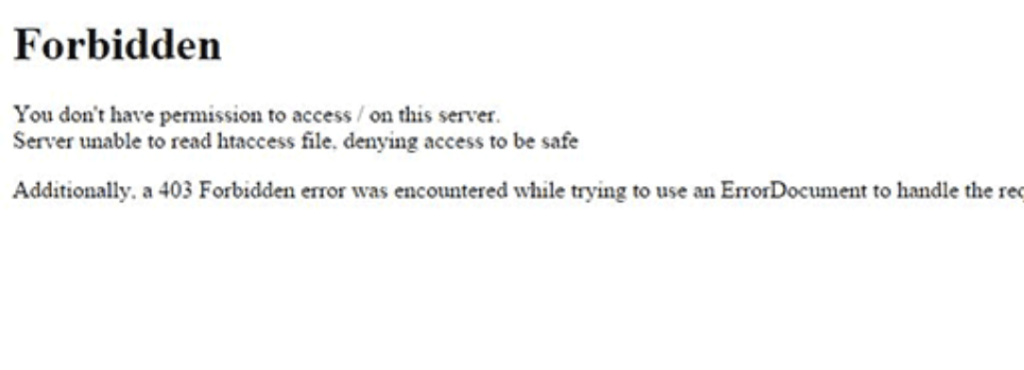
A 403 Forbidden Error indicates that server permissions are preventing access to a page. This can be due to incorrect file permissions, security plugins, or server configuration issues. Adjusting file permissions or temporarily deactivating security plugins can help identify the cause.
18. Too Many Redirects Issue
The Error Too Many Redirects is typically related to incorrect website configuration settings. Checking your website’s settings in the WordPress dashboard for any misconfigurations, particularly with the site URL and home URL, can resolve this. Ensuring that your .htaccess file is correctly set up and does not contain any redundant redirects is also crucial.
In conclusion, while encountering errors on your WordPress site can be stressful, understanding these common issues and knowing how to fix them can help keep your site running smoothly. Regular maintenance, updates, and security checks are key to minimizing these errors.
Preventing WordPress Errors
Preventing WordPress errors before they occur is paramount for maintaining a seamless and stress-free website experience. By prioritizing updates, backups, and choosing quality hosting, you can safeguard your site against common issues that might otherwise hinder its performance and security.
Keeping WordPress, Themes, and Plugins Updated
Regularly updating WordPress, its themes, and plugins is crucial for several reasons. First and foremost, updates often address security vulnerabilities, protecting your site from potential threats. They also introduce new features and improvements while fixing bugs that could impact your site’s functionality. To keep your site secure and functioning optimally, follow these simple steps:
- Set reminders to check for updates weekly or use a management tool that notifies you of available updates.
- Before updating, create a backup of your website to prevent data loss in case the update causes issues.
- Read the update notes for any major changes or potential compatibility issues with other plugins or themes you are using.
- Update plugins and themes one at a time to isolate any errors that occur.
Consistently applying updates ensures your WordPress site remains secure, fast, and error-free, enhancing the overall user experience.
The Importance of Regular Backups
Regular backups are your safety net in the digital world. They allow you to restore your website to a previous state if something goes wrong, such as a hack, data loss, or an update that crashes your site. Implementing a routine backup strategy encompasses:
- Creating daily backups for sites with frequent changes or transactions.
- Weekly or monthly backups for sites with less frequent updates.
- Storing backups in multiple locations, such as on a local device and in cloud storage, to prevent total data loss.
- Automating the backup process using plugins or services offered by your hosting provider for convenience and reliability.
Adopting a proactive approach to backups minimizes downtime and ensures a quick recovery from unexpected situations, keeping your site accessible to users and safeguarding your data.
Choosing Quality Hosting
Selecting the right hosting service is a foundational decision that affects your website’s performance, security, and scalability. Quality hosting provides:
- Optimized servers for WordPress, enhancing site speed and handling traffic spikes efficiently.
- Powerful security measures, including regular backups, malware scanning, and security updates to protect your site.
- Access to expert support for quick resolution of technical issues and guidance on best practices.
- Scalability options to support your website’s growth without sacrificing performance.
- Customization support for themes and plugins, allowing you to extend your site’s functionality and design.
Investing in quality hosting from the outset sets a solid foundation for your WordPress site, offering peace of mind regarding performance, security, and support.
Advanced Troubleshooting Techniques
When basic troubleshooting doesn’t resolve WordPress issues, it’s time to delve deeper. Advanced techniques can uncover and fix hidden problems, improving website functionality and security. Let’s explore some of these methods, focusing on their simplicity and effectiveness for users of all skill levels.
Enabling WP_DEBUG
One of the first steps in advanced WordPress troubleshooting is enabling WP_DEBUG. This feature, found within the wp-config.php file, turns on the debug mode, shedding light on underlying issues. Here’s how to enable it:
- Access your WordPress files through an FTP client.
- Find the wp-config.php file and open it for editing.
- Locate the line
define('WP_DEBUG', false);and change thefalsetotrue. - Save your changes and upload the file back to the server.
With WP_DEBUG enabled, visit the page experiencing issues. You’ll see error messages that provide insights into what might be going wrong. It’s crucial to disable debug mode after troubleshooting by setting WP_DEBUG back to false to maintain your site’s security and performance.
Checking and Repairing the WordPress Database
Database issues can lead to a variety of WordPress errors. To check and repair your WordPress database:
- Backup your WordPress database for safety.
- Access phpMyAdmin from your hosting control panel.
- Select your WordPress database from the list on the left.
- Click on the Check All box at the bottom to select all tables.
- From the dropdown menu, choose Check Table to diagnose issues or Repair Table to fix any found errors.
This process can identify and correct common database problems that might be affecting your site’s performance.
Fixing File Permissions
Incorrect file permissions can lead to vulnerabilities and access issues, affecting your site’s functionality. WordPress file permissions dictate who can read, write, and execute files on your server. Here’s a brief guide to correct permissions:
- Files should be set to 644, allowing the owner to write and everyone else to read.
- Directories should be set to 755, enabling the owner to write, read, and execute, while others can read and execute.
- Use an FTP client to navigate to your WordPress files and right-click to change file or folder permissions.
Setting the proper permissions ensures your site’s security and prevents unauthorized modifications, securing your WordPress environment effectively.
By employing these advanced troubleshooting techniques, you’ll not only solve complex issues but also enhance the security and performance of your WordPress site. Remember to take appropriate safety measures, like backups, and consult with professionals when needed to ensure the best outcome for your site.
Wrap Up: Create a System for Ongoing Maintenance
To keep your WordPress site running smoothly, it’s essential to establish a routine maintenance schedule. This involves regular updates, backups, security checks, and performance assessments. A well-maintained website not only performs better but also ranks higher in search engine results, attracting more traffic and providing a better user experience. Here are steps to create an effective maintenance system:
- Weekly Checks: Update WordPress core, themes, and plugins to their latest versions to ensure security and functionality.
- Monthly Reviews: Examine your website’s loading speed and review security scans for potential vulnerabilities. Utilizing tools like Google PageSpeed Insights can offer valuable insights into your site’s performance.
- Quarterly Audits: Review your content for outdated information, broken links, and SEO optimization opportunities. Keeping content fresh and relevant not only helps retain visitors but also boosts your site’s SEO.
- Regular Backups: Implement daily or weekly backups to secure your data. In the event of a security breach or data loss, backups are crucial for restoring your site quickly.
While these tasks might seem daunting, various tools and plugins can simplify the process. For instance, security plugins can automate scans and fixes for common vulnerabilities, whereas backup plugins can handle scheduled backups without manual intervention.
When to Seek Professional Help
Despite your best efforts at maintenance, some issues might require professional assistance. Knowing when to seek help can save you time and protect your site from further damage. Consider hiring an expert if you encounter:
- Complex Technical Issues: Problems that persist after basic troubleshooting might indicate deeper issues that require a professional’s expertise.
- Security Breaches: If your site has been hacked or you’ve noticed unusual activity, an expert in security can help mitigate the damage and strengthen your site’s defenses.
- Performance Optimization: For improving your site’s speed and user experience, a specialist in WordPress performance can implement advanced optimizations that go beyond basic tweaks.
Partnering with a reliable service provider or hiring a professional WordPress developer can ensure your site remains in top condition, allowing you to focus on your core business activities. Whether you handle maintenance chores yourself or decide to bring in experts for certain tasks, the goal is to ensure a smooth, secure, and efficient WordPress experience for your users.
Remember, the goal is to maintain a secure, fast, and user-friendly website that meets the needs of your audience and supports your business objectives. Keep in mind the strategies we outlined in the article to keep your WordPress website in top condition, ready to impress your visitors and perform at its best.
